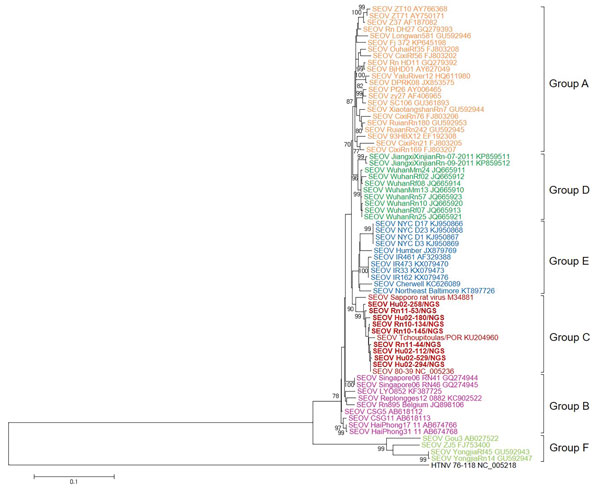Volume 24, Number 2—February 2018
Research
Multiplex PCR−Based Next-Generation Sequencing and Global Diversity of Seoul Virus in Humans and Rats
Figure 2

Figure 2. Phylogenetic analysis of SEOV small RNA segments, South Korea, 2000–2016, and reference strains. A phylogenetic tree was generated by using the maximum-likelihood method with the T92 + gamma distribution model of evolution and alignment of small RNA segment sequences (nt 193–1332) of SEOV strains. Colored groups indicate the areas where SEOV strains were identified: group A, northeastern and southeastern China and North Korea; group B, Europe (France and Belgium) and Southeast Asia (Vietnam and Singapore); group C, South Korea, Japan, and the United States; group D, southeastern China; group E, United Kingdom and the United States; group F, mountainous areas in southeastern China. Bold red indicates SEOV strains sequenced in this study. Topologies were evaluated by bootstrap analyses of 1,000 iterations. Numbers along branches are bootstrap values. GenBank accession numbers are provided. Scale bar indicates nucleotide substitutions per site. SEOV, Seoul virus.
1These authors contributed equally to this article.